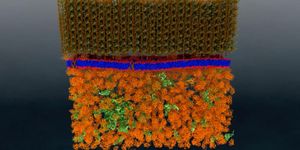It's raining acid? Acid rain refers to precipitation that is more acidic than normal rain (which itself has a pH of 6, so is already naturally acidic). Acid rain can become so acidic so as to measure a pH of 3 - which means that it is 1,000 times more acidic than normal rain. So why does this crazy phenomenon happen?
Acid rain is caused by a chemical reaction that begins when compounds like sulfur dioxide and nitrogen oxides are released into the air. This emissions mostly come in the form of air pollution from burning fossil fuels and spraying aerosols. According to the EPA, sulfur dioxide and nitrogen oxides dissolve very easily in water and can be carried very far by the wind, which explains why acid rain doesn't always fall where the pollution is made.
The effect that acid rain has on the environment depends greatly on where the rain falls. If it falls on limestone-rich soil, which is alkaline, the soil is able to neutralize the acid, and there won't be much impact on the land. But if the acid rain falls on neutral or already acidic soils, it can be a death sentence for many plants and animals that live there.








